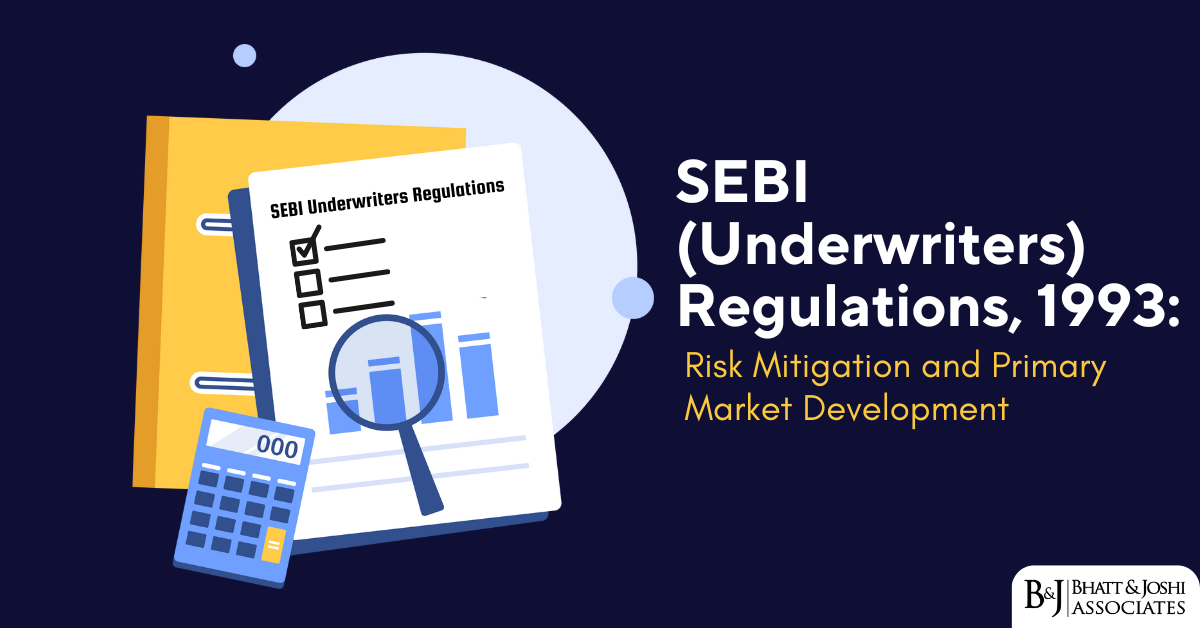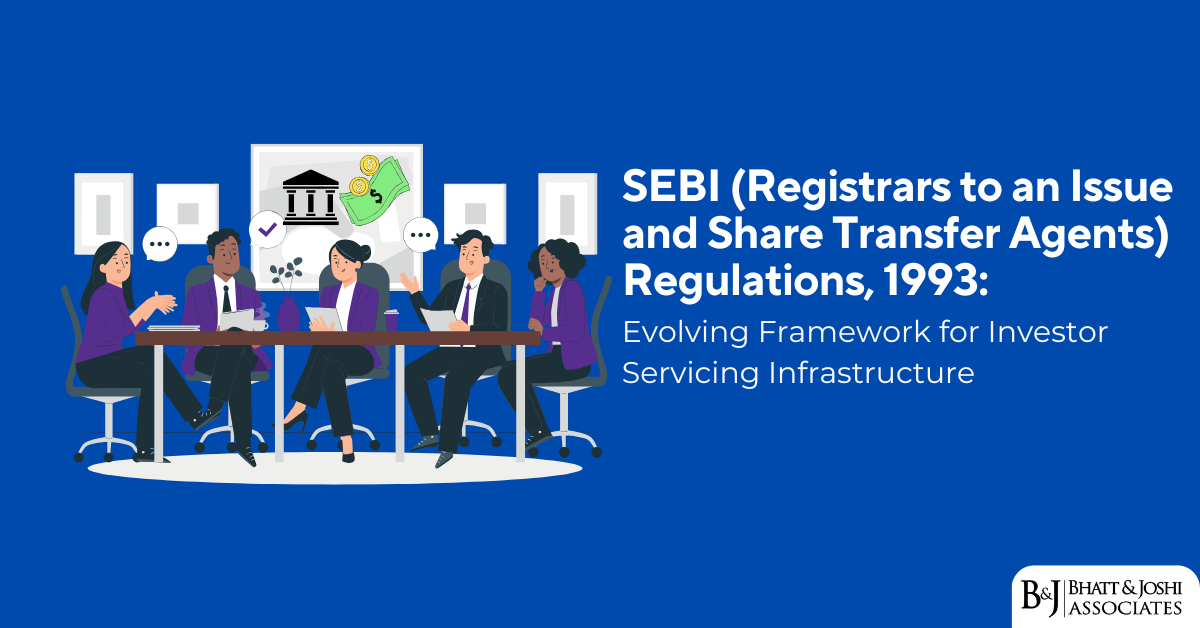Introduction
Employment verification forms serve as critical documents in the recruitment process, designed to assess the character, antecedents, and suitability of candidates for various positions. The challenge of employees suppressing material information regarding their criminal history, arrests, or pending legal proceedings has been a recurring issue in employment law, particularly affecting government services and disciplined forces. The Supreme Court of India, recognizing the complexity and inconsistency in judicial approaches to this matter, provided definitive guidelines in the landmark case of Avtar Singh v. Union of India [1] that have fundamentally reshaped how employers must approach such situations.
The significance of these guidelines extends beyond mere procedural compliance. They represent a balanced approach that protects both employer interests in maintaining integrity within their workforce and employee rights against arbitrary dismissal. The guidelines acknowledge that while employers have legitimate concerns about character verification, particularly in sensitive positions, employees should not face automatic disqualification for every instance of non-disclosure, especially where the circumstances suggest no malicious intent or where the suppressed information is trivial in nature.
This legal framework has become increasingly relevant in contemporary employment verification practices, where background checks have grown more sophisticated and comprehensive. The proliferation of digital records and enhanced investigative capabilities means that discrepancies between declared information and actual records are more likely to surface, making these guidelines essential for fair and lawful employment verification procedures.
Legal Framework and Constitutional Principles of Employment Verification
The Constitutional Foundation
The Supreme Court’s approach to employment verification cases is grounded in fundamental constitutional principles, particularly the right to equality under Article 14 and the right to livelihood under Article 21 of the Indian Constitution. The Court has consistently emphasized that while employers have the discretion to determine fitness for employment, this discretion cannot be exercised arbitrarily or without regard to constitutional mandates [2].
The constitutional framework requires that employment decisions, particularly those involving termination or cancellation of candidature, must be based on objective criteria and reasonable considerations. The Court has noted that “McCarthyism” – the practice of making accusations without proper regard to evidence or the right to due process – is antithetical to constitutional goals and democratic values [3]. This principle underlies the more nuanced approach advocated in the Avtar Singh guidelines.
The fundamental right to practice any profession or carry on any trade or business, guaranteed under Article 19(1)(g), also influences the Court’s approach. This right, while not absolute, cannot be curtailed without reasonable restrictions that serve a legitimate state interest. In the context of employment verification, this means that disqualification based on criminal antecedents must be proportionate to the nature of the position and the actual risk posed by the candidate.
Evolution of Judicial Approach
Prior to the Avtar Singh decision, courts had taken inconsistent approaches to cases involving suppression of information in employment verification forms. Some decisions took a strict approach, treating any non-disclosure as grounds for automatic disqualification, while others adopted a more lenient stance, particularly where the suppressed information was trivial or where the candidate had been acquitted [4].
This inconsistency created uncertainty for both employers and employees, leading to arbitrary outcomes and potential miscarriage of justice. The Supreme Court recognized this problem and specifically noted that the conflicting decisions from coordinate benches necessitated authoritative guidelines to ensure uniform application of legal principles across all courts and employment authorities.
The evolution reflects a broader shift in employment law from rigid, punitive approaches to more contextual, rehabilitative ones. This change acknowledges that people can reform and that past mistakes, particularly minor ones or those made in youth, should not necessarily bar individuals from productive employment, especially where they pose no real risk to the employer or society.
The Avtar Singh Guidelines: A Detailed Analysis
Core Principles
The Supreme Court in Avtar Singh v. Union of India established ten fundamental principles to guide employers when dealing with suppression or false information in verification forms. These principles represent a comprehensive framework that balances the legitimate interests of employers with the constitutional rights of employees [5].
The first principle establishes the baseline requirement that information provided by candidates regarding conviction, acquittal, arrest, or pendency of criminal cases must be truthful, with no suppression or false mention of required information. This principle affirms the employer’s right to accurate information while setting clear expectations for candidates about their disclosure obligations.
The second principle requires employers to consider special circumstances of each case when passing orders of termination or cancellation of candidature. This introduces a crucial element of contextual analysis, preventing mechanical application of penalties without regard to individual circumstances. The principle recognizes that the same act of non-disclosure may have different implications depending on the context, timing, and other relevant factors.
The third principle mandates that employers must consider applicable government orders, instructions, and rules when making decisions. This requirement ensures that decisions are made within the proper legal framework and that employers do not exceed their authority or ignore relevant policy considerations that may apply to specific categories of employees or situations.
Guidelines for Different Scenarios
Trivial Offenses and Minor Convictions
The guidelines provide specific direction for cases involving trivial offenses, such as shouting slogans at a young age or petty offenses that would not render a candidate unfit for the position in question. In such cases, employers are granted discretion to ignore the suppression and condone the lapse [6]. This provision reflects the Court’s recognition that not all criminal activity carries the same moral weight or indicates unfitness for employment.
The concept of “triviality” requires careful assessment of multiple factors: the nature of the offense, the age of the candidate at the time of commission, the circumstances surrounding the offense, and the relevance to the specific position sought. For instance, a conviction for peaceful protest activities might be considered trivial for most employment purposes, while the same might not apply to positions requiring strict adherence to authority.
This flexibility serves important social and economic purposes. It prevents the permanent exclusion of individuals from employment based on minor infractions that may have occurred years earlier, particularly during their youth. This approach aligns with principles of rehabilitation and second chances that are fundamental to a just society.
Serious Offenses and Non-Trivial Convictions
For non-trivial convictions, the guidelines permit employers to cancel candidature or terminate services. This provision recognizes that some criminal activities do indicate unfitness for employment, particularly in positions of trust or authority. The determination of what constitutes a “non-trivial” offense requires careful consideration of the specific offense, its circumstances, and its relevance to the employment in question [7].
The guidelines do not provide an exhaustive list of what constitutes serious versus trivial offenses, leaving this determination to the discretion of employers based on the specific facts of each case. This approach is practical given the wide variety of offenses that exist and the equally diverse range of employment positions and their requirements.
However, this discretion must be exercised reasonably and with proper justification. Courts have emphasized that employers cannot adopt blanket policies that treat all offenses equally without regard to their nature, circumstances, or relevance to the employment. The decision must be based on a genuine assessment of fitness for the particular position.
Cases Involving Acquittals
The guidelines provide specific direction for cases where candidates have been acquitted of charges. The approach varies depending on the nature of the acquittal and the circumstances surrounding it. For acquittals in cases involving moral turpitude or serious offenses, employers may still consider the antecedents if the acquittal was on technical grounds rather than a clean acquittal, or where the benefit of reasonable doubt was given [8].
This provision recognizes the distinction between different types of acquittals. A clean acquittal, where the court finds that the accused did not commit the offense, carries different implications than an acquittal based on technical grounds, insufficient evidence, or benefit of doubt. The latter categories may still raise legitimate concerns about character and fitness, even though they do not result in conviction.
The guidelines emphasize that acquittal does not automatically entitle a candidate to appointment or continuation in service. Employers retain the right to evaluate the underlying conduct and circumstances, even where no conviction resulted. This balanced approach protects employers’ legitimate interests while ensuring that candidates are not unfairly penalized for charges that did not result in conviction.
Multiple Pending Cases and Deliberate Suppression
The guidelines address situations involving multiple pending cases or deliberate suppression with particular seriousness. Where a candidate has suppressed information about multiple pending criminal cases, such false information assumes greater significance, and employers may pass appropriate orders canceling candidature or terminating services [9].
The rationale for this stricter approach is clear: multiple pending cases may indicate a pattern of criminal behavior that raises serious questions about character and fitness. Moreover, the deliberate suppression of information about multiple cases suggests a calculated attempt to deceive the employer, which itself raises concerns about honesty and integrity.
However, even in cases of multiple pending cases, the guidelines do not mandate automatic disqualification. Employers must still exercise appropriate judgment, considering factors such as the nature of the cases, their current status, the time elapsed since their filing, and their relevance to the specific employment. The emphasis remains on informed decision-making rather than mechanical application of penalties.
Procedural Safeguards and Due Process Requirements
Departmental Inquiry Requirements
For confirmed employees, the guidelines mandate that departmental inquiry must be conducted before passing orders of termination, removal, or dismissal on grounds of suppression or false information in verification forms. This requirement reflects the principle that confirmed employees have earned certain procedural rights through their service and cannot be summarily dismissed without proper process [10].
The departmental inquiry process serves multiple purposes. It ensures that the employee has an opportunity to explain their conduct and present their side of the story. It also allows for a more thorough investigation of the circumstances surrounding the non-disclosure, which may reveal mitigating factors or justifications that were not initially apparent.
The requirement for departmental inquiry also ensures that decisions are made by appropriate authorities with proper consideration of all relevant factors. This process includes the right to representation, the opportunity to cross-examine witnesses, and the right to present evidence in defense. These procedural safeguards are essential for ensuring fairness and preventing arbitrary or vindictive actions.
Specificity Requirements for Verification Forms
The guidelines emphasize that verification forms must be specific rather than vague, and that action can only be taken based on suppression of information that was specifically required to be disclosed. If information that was not asked for but is relevant comes to the employer’s knowledge, it can be considered objectively while addressing the question of fitness, but action cannot be based on suppression or false information regarding facts that were not specifically inquired about [11].
This requirement serves to protect employees from unfair treatment based on technicalities or overly broad interpretations of disclosure obligations. It ensures that employees have clear notice of what information they are required to provide and cannot be penalized for failing to disclose information that was not specifically requested.
The specificity requirement also prevents employers from conducting “fishing expeditions” where they seek to discover any possible grounds for disqualification without clearly articulating what information is relevant and necessary for the position. This approach promotes transparency and fairness in the recruitment process.
Knowledge Attribution and Mens Rea
The guidelines establish that before a person can be held guilty of suppressio veri (suppression of truth) or suggestio falsi (suggestion of falsehood), knowledge of the fact must be attributable to them. This requirement introduces a crucial element of mens rea or mental culpability into the analysis [12].
The knowledge requirement recognizes that there may be circumstances where candidates are genuinely unaware of criminal cases filed against them, particularly in cases involving mistaken identity, cases filed in distant jurisdictions, or cases filed without proper service of process. In such situations, it would be unfair to penalize candidates for failing to disclose information they did not possess.
However, the guidelines also recognize that candidates cannot simply claim ignorance to avoid consequences. The determination of whether a candidate had knowledge requires careful examination of the circumstances, including the nature of the case, the jurisdiction where it was filed, whether proper legal process was followed, and whether the candidate had any reasonable opportunity to become aware of the proceedings.
Contemporary Applications and Recent Developments
Technological Advancements and Verification Processes
The advent of digital record-keeping and sophisticated background verification technologies has significantly impacted the application of these guidelines. Modern verification processes can uncover discrepancies that might previously have gone undetected, making the proper application of the Avtar Singh principles even more crucial [13].
Digital databases maintained by law enforcement agencies, courts, and other governmental bodies now allow for more comprehensive background checks. This technological capability means that employers can verify candidate information more thoroughly than ever before, but it also increases the likelihood of discovering minor discrepancies or technical violations that may not have been intentionally suppressed.
The challenge for employers is to use these technological tools responsibly and in accordance with the principles established in Avtar Singh. The availability of comprehensive background information does not justify a return to rigid, zero-tolerance approaches. Instead, employers must apply the guidelines’ nuanced approach to evaluate whether discovered discrepancies warrant adverse action.
Sector-Specific Considerations
Different employment sectors present varying considerations for the application of these guidelines. Positions in law enforcement, judiciary, banking, and other sectors requiring high levels of trust and integrity may justifiably apply stricter standards than positions in other sectors [14].
For disciplined forces and law enforcement agencies, the guidelines recognize that the ability to inspire public confidence is crucial for effective functioning. In these contexts, even minor criminal infractions may have greater significance than they would in other employment contexts. However, even in these sensitive positions, the guidelines require individualized assessment rather than blanket disqualification.
Educational institutions face particular challenges in applying these guidelines, as they must balance the need for role models and character exemplars with principles of rehabilitation and second chances. The guidelines provide framework for making these determinations while ensuring that decisions are based on legitimate considerations rather than arbitrary moral judgments.
International Perspectives and Comparative Analysis
The approach taken in Avtar Singh reflects broader international trends toward more nuanced and rehabilitative approaches to employment screening. Many developed jurisdictions have moved away from blanket bans on employing individuals with criminal records toward more individualized assessments [15].
The European Union’s approach to criminal record checks in employment emphasizes proportionality and relevance, principles that align with the Avtar Singh guidelines. Similarly, several U.S. jurisdictions have adopted “ban the box” policies that delay criminal history inquiries until later in the hiring process, allowing candidates to be evaluated on their merits before criminal history is considered.
These international developments support the wisdom of the Supreme Court’s approach in Avtar Singh, demonstrating that effective employment screening can be achieved without resorting to blanket exclusions that may perpetuate social inequalities and hinder rehabilitation efforts.
Practical Implementation Guidelines for Employers
Developing Institutional Policies
Employers should develop clear, written policies for handling cases involving suppression or false information in verification forms. These policies should incorporate the Avtar Singh principles while addressing the specific needs and characteristics of their organizations [16].
Effective policies should include clear definitions of what constitutes trivial versus serious offenses in the context of specific positions. They should also establish procedures for conducting individualized assessments, including the factors to be considered and the documentation required to support decisions.
Training programs for human resources personnel and hiring managers are essential for ensuring consistent and fair application of these guidelines. Such training should cover the legal requirements, the organization’s policies, and the procedures for documenting decisions to ensure they can withstand legal scrutiny.
Documentation and Record-Keeping
Proper documentation is crucial for defending employment decisions based on these guidelines. Employers should maintain detailed records of their decision-making process, including the factors considered, the rationale for their conclusions, and any mitigating or aggravating circumstances identified [17].
Documentation should include copies of verification forms, background check reports, any correspondence with candidates regarding discrepancies, and records of any hearings or discussions held regarding the matter. This comprehensive record-keeping serves both legal compliance purposes and helps ensure consistent application of policies across different cases.
The documentation should also reflect the individualized nature of each assessment, showing how the specific circumstances of each case were considered in reaching the final decision. Generic or template-based documentation that fails to address the unique aspects of each case may be insufficient to justify adverse employment actions.
Appeal and Review Mechanisms
Organizations should establish internal appeal mechanisms that allow candidates or employees to challenge adverse decisions based on verification form discrepancies. These mechanisms should provide for independent review of decisions and the opportunity for candidates to present additional information or context [18].
The appeal process should be transparent, with clear timelines and procedures. It should allow for the presentation of new evidence, reconsideration of the initial decision in light of additional information, and the possibility of alternative outcomes such as conditional employment or probationary periods.
External review mechanisms, such as referral to appropriate tribunals or courts, should also be clearly communicated to affected individuals. Organizations should ensure that their policies and procedures comply with applicable laws regarding administrative appeals and judicial review.
Challenges in Applying Avtar Singh Guidelines in Employment Verification
Balancing Competing Interests
The implementation of Avtar Singh guidelines requires careful balancing of multiple competing interests: employer needs for trustworthy employees, employee rights to fair treatment and livelihood, public interest in rehabilitation and second chances, and societal concerns about public safety and security [19].
This balancing act is particularly challenging in high-stakes employment sectors where public trust and confidence are paramount. Employers in these sectors must navigate between legitimate security concerns and the risk of perpetuating discrimination against individuals who have had minor brushes with the law.
The challenge is compounded by public expectations and media scrutiny that may pressure employers toward zero-tolerance approaches even where such approaches are not legally required or socially beneficial. Organizations must develop the institutional courage to apply these guidelines fairly even when facing external pressure to take harsher approaches.
Emerging Issues in Employment Verification
New challenges continue to emerge in employment verification, including issues related to juvenile records, expunged convictions, foreign criminal records, and the verification of information from online sources. The Avtar Singh guidelines provide a framework for addressing these issues, but specific applications may require further judicial or legislative guidance [20].
The increasing use of artificial intelligence and automated screening tools in employment verification processes raises important questions about how these guidelines should be applied to technology-driven hiring decisions. Organizations must ensure that such systems reflect the nuanced, individualized approach required by the guidelines, rather than relying on rigid, algorithmic rules.
Social media and online presence verification present new challenges for applying these principles. Information discovered through social media searches may not have been specifically requested in verification forms, raising questions about how such information should be treated under the guidelines’ requirements for specificity and knowledge attribution.
Conclusion
The Supreme Court’s guidelines in Avtar Singh v. Union of India represent a watershed moment in Indian employment law, providing a balanced framework that protects both employer interests and employee rights. These guidelines reject both the harsh, unforgiving approaches that automatically disqualify candidates for any criminal involvement and the overly permissive approaches that ignore legitimate employer concerns about character and fitness.
The strength of these guidelines lies in their recognition that employment decisions involving criminal antecedents cannot be made mechanically but require careful, individualized assessment of multiple factors. This approach acknowledges the complexity of human behavior and the possibility of rehabilitation while still allowing employers to make informed decisions about candidate suitability.
The guidelines’ emphasis on proportionality, specificity, and due process reflects fundamental constitutional principles and promotes fairness in employment practices. By requiring employers to consider the nature of offenses, the circumstances of candidates, and the relevance to specific positions, the guidelines prevent arbitrary discrimination while preserving legitimate employer prerogatives.
The successful implementation of these guidelines depends on the commitment of employers to develop fair policies, train their personnel properly, and apply the principles consistently. It also requires ongoing judicial oversight to ensure that the guidelines are not circumvented through technicalities or creative interpretations that undermine their protective intent.
Looking forward, these guidelines provide a foundation for addressing emerging challenges in employment verification, while maintaining the balance between competing interests that they establish. As employment verification practices continue to evolve with technological and social changes, the principles established in Avtar Singh will continue to provide valuable guidance for ensuring fair and lawful employment decisions.
The ultimate success of this framework will be measured not just in legal compliance but in its contribution to a more just and inclusive employment environment that provides opportunities for rehabilitation and second chances while protecting legitimate employer and public interests. The guidelines represent a mature approach to employment law that recognizes both the importance of character in employment decisions and the fundamental human capacity for growth and change.
References
[1] Avtar Singh v. Union of India, (2016) 8 SCC 471, available at https://indiankanoon.org/doc/175903641/
[2] “Suppression of Information by Employees/Candidates: SC issues Guidelines,” LiveLaw, available at https://www.livelaw.in/suppression-information-employeecandidates-sc-issues-guidelines
[3] Avtar Singh v. Union of India, (2016) 8 SCC 471, Para 31, available at https://www.casemine.com/judgement/in/5a351a6fce686e2baed3a142
[4] “Procedure In Case Of Suppression Of Fact Of Criminal Antecedent By Employee,” CiteHR, available at https://www.citehr.com/571251-procedure-case-suppression-fact-criminal-antecedent-employee.html
[5] Avtar Singh v. Union of India, (2016) 8 SCC 471, Para 38, available at https://www.supremecourtcases.com/avtar-singh-v-union-of-india-and-ors/
[6] “Impact of civil or criminal case on your job profile,” iPleaders, available at https://blog.ipleaders.in/criminal-case-on-your-job/
[7] “Procedure to be followed by employer in case of suppression of fact of criminal antecedent by employee,” Law Web, available at https://www.lawweb.in/2016/09/procedure-to-be-followed-by-employer-in.html
[8] Avtar Singh v. Union of India, (2016) 8 SCC 471, Guidelines 38.4.3
[9] Avtar Singh v. Union of India, (2016) 8 SCC 471, Guidelines 38.7
[10] Avtar Singh v. Union of India, (2016) 8 SCC 471, Guidelines 38.9
[11] Avtar Singh v. Union of India, (2016) 8 SCC 471, Guidelines 38.10
[12] Avtar Singh v. Union of India, (2016) 8 SCC 471, Guidelines 38.11
[13] “Pawan Kumar v. Union of India: Supreme Court’s Landmark Ruling on Employment Verification,” CaseMine, available at https://www.casemine.com/commentary/in/pawan-kumar-v.-union-of-india:-supreme-court’s-landmark-ruling-on-employment-verification/view
[14] “Employee Can Be Terminated For Suppression Or False Information Regarding Suitability: Supreme Court,” LiveLaw, available at https://www.livelaw.in/top-stories/employee-can-be-terminated-for-suppression-or-false-information-regarding-suitability-supreme-court-210291
[15] “Whether non-disclosure of criminal case in job verification form is always fatal to candidate’s employment? Supreme Court answers,” SCC Online, available at https://www.scconline.com/blog/post/2024/02/28/non-disclosure-of-criminal-case-is-not-always-fatal-to-candidate-employment-supreme-court-legal-news/
[16] Avtar Singh v. Union of India and Others, Supreme Court Cases, available at https://www.supremecourtcases.com/avtar-singh-v-union-of-india-and-ors/
[17] Avtar Singh v. Union of India and Others, (2017) judgment, available at https://lextechsuite.com/Avtar-Singh-Versus-Union-of-India-and-Others-2017-11-15
[18] Avtar Singh v. Union of India and Others, CaseMine, available at https://www.casemine.com/judgement/in/5a351a6fce686e2baed3a142
[19] Satish Chandra Yadav vs Union of India, 2022 LiveLaw (SC) 798
[20] “Pawan Kumar v. Union of India: Supreme Court’s Landmark Ruling,” CaseMine Commentary, available at https://www.casemine.com/commentary/in/pawan-kumar-v.-union-of-india:-supreme-court’s-landmark-ruling-on-employment-verification/view
PDF to Full Judgement
Written and Authorized by : Prapti Bhatt














